-
 Bitcoin
Bitcoin $116700
0.24% -
 Ethereum
Ethereum $3973
4.34% -
 XRP
XRP $3.283
7.68% -
 Tether USDt
Tether USDt $1.000
0.01% -
 BNB
BNB $789.8
2.27% -
 Solana
Solana $176.2
3.31% -
 USDC
USDC $0.9999
0.00% -
 Dogecoin
Dogecoin $0.2238
5.14% -
 TRON
TRON $0.3389
-0.51% -
 Cardano
Cardano $0.7907
4.03% -
 Stellar
Stellar $0.4527
10.02% -
 Hyperliquid
Hyperliquid $41.07
4.27% -
 Sui
Sui $3.794
1.77% -
 Chainlink
Chainlink $19.49
10.40% -
 Bitcoin Cash
Bitcoin Cash $580.9
0.74% -
 Hedera
Hedera $0.2617
4.32% -
 Avalanche
Avalanche $23.41
3.67% -
 Ethena USDe
Ethena USDe $1.001
-0.03% -
 Litecoin
Litecoin $122.4
1.38% -
 Toncoin
Toncoin $3.364
1.49% -
 UNUS SED LEO
UNUS SED LEO $8.988
0.37% -
 Shiba Inu
Shiba Inu $0.00001295
2.82% -
 Uniswap
Uniswap $10.62
5.75% -
 Polkadot
Polkadot $3.922
4.46% -
 Dai
Dai $1.000
0.01% -
 Bitget Token
Bitget Token $4.494
2.15% -
 Monero
Monero $268.0
-1.30% -
 Cronos
Cronos $0.1523
3.68% -
 Pepe
Pepe $0.00001127
4.43% -
 Aave
Aave $285.4
4.85%
How do I analyze the rarity of an NFT?
NFT rarity, determined by uncommon traits or combinations, influences value, with tools like Rarity Sniper helping collectors assess and validate scarcity across blockchains.
Aug 09, 2025 at 01:00 am
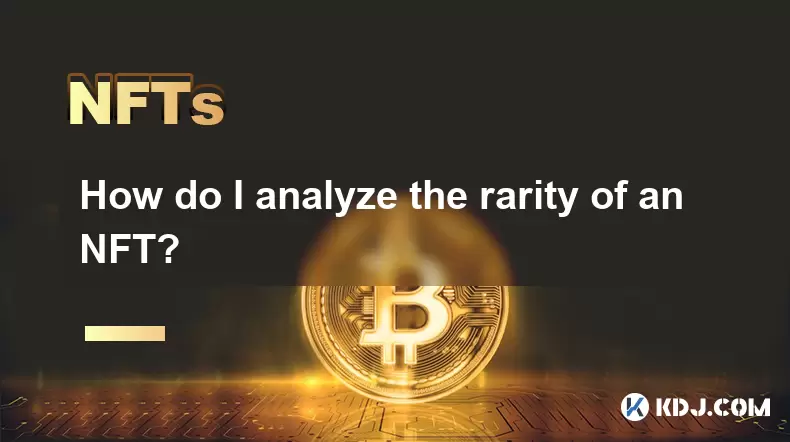
Understanding NFT Rarity and Its Importance
NFTs, or non-fungible tokens, represent unique digital assets verified on a blockchain. Unlike fungible tokens such as Bitcoin or Ethereum, each NFT has distinct properties that make it one-of-a-kind. The concept of rarity plays a central role in determining an NFT’s perceived value. Rarity refers to how uncommon certain traits or combinations of traits are within a given NFT collection. For example, in a collection of 10,000 profile picture (PFP) NFTs, a character with a golden crown might appear in only 10 tokens, making it rare. Collectors often use rarity as a benchmark for investment potential, with rarer traits typically commanding higher prices in secondary markets.
Identifying Traits and Attribute Types
To analyze rarity, start by examining the individual traits that compose each NFT. Most NFT projects are built on a generative art model, where various layers—such as background, clothing, facial expression, and accessories—are algorithmically combined. Each of these layers is a trait category, and the specific variation within that category (e.g., “red hat” or “cyber sunglasses”) is a trait value. Begin by collecting a complete list of all possible traits and their occurrences across the collection. This data is often available through the NFT project’s metadata or via third-party analytics platforms like Rarity Tools, Traitsniper, or NFTBank. Ensure that you verify the data source’s accuracy, as incorrect metadata can lead to flawed rarity assessments.
Calculating Trait Rarity Scores
Once you have a comprehensive list of traits and their frequencies, you can compute a rarity score for each NFT. One common method is the statistical rarity score, which sums the inverse of the percentage occurrence for each trait. For instance, if an NFT has a hat that appears in 2% of the collection, its contribution to the score is 1 / 0.02 = 50. Repeat this calculation for every trait and sum the results. A higher total indicates greater rarity. Another approach is the rarity rank, which compares an NFT’s score against all others in the collection and assigns a position (e.g., “#12 out of 10,000”). Some platforms use weighted scoring models that prioritize certain trait categories deemed more valuable by the community.
- Collect metadata for all NFTs in the collection
- Extract and categorize all trait types and values
- Calculate the frequency of each trait across the collection
- Apply the inverse frequency formula to each trait
- Sum the individual scores to get the total rarity score
Using Rarity Analysis Tools
Several online tools streamline the process of rarity analysis, eliminating the need for manual calculations. Platforms like Rarity Sniper allow users to input a collection name and instantly view rarity rankings for all NFTs. These tools often provide additional insights, such as floor price comparisons, trait distribution charts, and ownership data. When using such services, ensure the platform supports the blockchain on which the NFT resides—most focus on Ethereum, but others cover Solana, Polygon, and BNB Chain. Always cross-reference data from multiple sources to confirm consistency. Some tools also offer browser extensions that overlay rarity scores directly on NFT marketplaces like OpenSea or Magic Eden.
- Navigate to a trusted rarity analysis website
- Search for the NFT collection by contract address or name
- Review the generated rarity leaderboard
- Click on individual NFTs to inspect trait breakdowns
- Export or bookmark high-rarity tokens for further evaluation
Assessing Trait Interdependence and Hidden Rarity
While individual trait rarity is important, some NFTs derive value from trait combinations that are statistically unlikely. For example, an NFT with both a “laser eyes” trait (1% occurrence) and a “diamond skin” trait (0.5% occurrence) might only exist in 0.005% of the collection if the traits are independent. However, if the generation algorithm prevents certain combinations, actual scarcity may differ. This is known as conditional rarity. Additionally, some collections contain hidden or secret traits not immediately visible in the image but recorded in metadata. These can include background colors, animation layers, or unlockable content accessible only under specific conditions. Always inspect the full metadata using blockchain explorers like Etherscan or Solscan to uncover such elements.
Community Perception and Market Validation
Even with a high rarity score, an NFT’s market value depends heavily on community consensus. Some traits, despite being statistically rare, may be considered undesirable due to aesthetics or cultural context. Conversely, certain common traits might gain popularity due to celebrity ownership or social media trends. Monitor Discord servers, Twitter discussions, and marketplace listings to gauge sentiment. Look at recent sale prices of NFTs with similar rarity profiles to validate whether rarity translates into actual demand. High rarity without trading volume may indicate perceived overvaluation. Always compare rarity data with real-world sales metrics before making decisions.
Frequently Asked Questions
Can two NFTs have the same rarity score?
Yes, it is possible for multiple NFTs to have identical rarity scores, especially in large collections with similar trait distributions. In such cases, tiebreakers like trait desirability, visual appeal, or historical significance may influence market value even if the statistical rarity is the same.
Does blockchain type affect rarity analysis?
The blockchain does not alter the intrinsic rarity of traits, but it can impact data accessibility. Ethereum-based NFTs often have more mature analytics tools, while newer blockchains may lack comprehensive rarity platforms. Always confirm that your chosen analysis tool supports the specific blockchain.
Is metadata the only source for accurate trait data?
Metadata is the primary source, but discrepancies can occur due to rendering errors or off-chain storage. Cross-checking metadata with visual representations and community-verified databases ensures greater accuracy in rarity assessment.
What if an NFT has hidden traits not listed on marketplaces?
Hidden traits are stored in the token’s metadata but may not be displayed on platforms like OpenSea. Use a blockchain explorer to view the full JSON metadata. Some rare traits, such as “1-of-1” attributes or unlockable content, are only discoverable through direct inspection of the data.
Disclaimer:info@kdj.com
The information provided is not trading advice. kdj.com does not assume any responsibility for any investments made based on the information provided in this article. Cryptocurrencies are highly volatile and it is highly recommended that you invest with caution after thorough research!
If you believe that the content used on this website infringes your copyright, please contact us immediately (info@kdj.com) and we will delete it promptly.
- Roman Storm, Funding Effort, and the Looming Defense Retrial: A New York Minute on the Tornado Cash Case
- 2025-08-09 02:50:14
- Crypto's Wild Ride: XRP, Dogecoin, and the Altcoin Surge You Can't Ignore
- 2025-08-09 02:50:14
- Elon Musk, Bitcoin, and the Enduring Power of Approval: A Crypto Love Story?
- 2025-08-09 03:50:15
- Ruvi AI: The Next Big Thing After Ripple on CoinMarketCap?
- 2025-08-09 03:50:15
- Floki Price Surges: Elliott Wave and Fibonacci Setups Point to Potential Gains!
- 2025-08-09 02:30:16
- Pepe Price, RTX (Remittix?) & the $10K ETH Dream: NYC Crypto Chatter
- 2025-08-09 02:30:16
Related knowledge
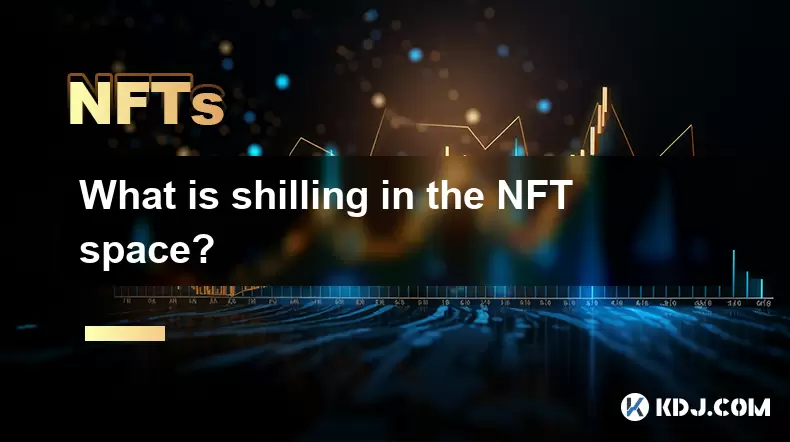
What is shilling in the NFT space?
Aug 08,2025 at 02:14am
Understanding the Concept of Shilling in the NFT EcosystemIn the NFT space, the term shilling refers to the act of aggressively promoting a specific d...
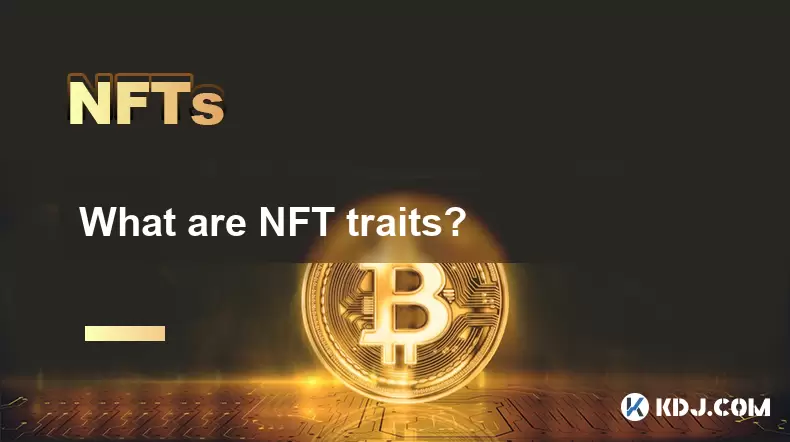
What are NFT traits?
Aug 07,2025 at 10:35pm
Understanding the Concept of NFT TraitsNFT traits define the unique characteristics of a non-fungible token, particularly within collections such as p...

How do I analyze the rarity of an NFT?
Aug 09,2025 at 01:00am
Understanding NFT Rarity and Its ImportanceNFTs, or non-fungible tokens, represent unique digital assets verified on a blockchain. Unlike fungible tok...
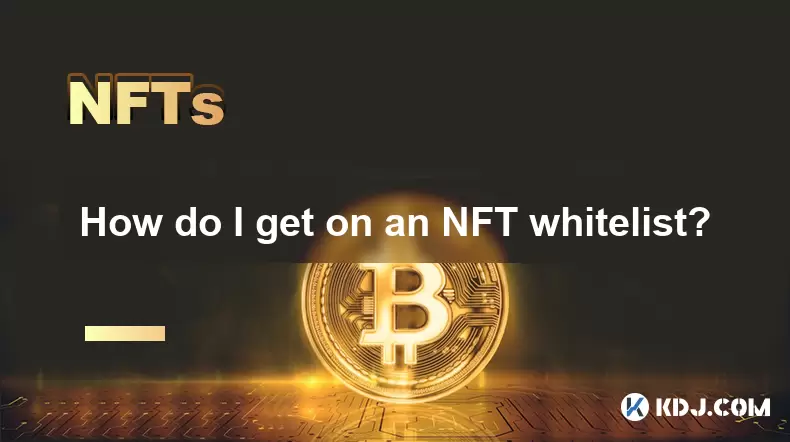
How do I get on an NFT whitelist?
Aug 08,2025 at 09:15am
Understanding the Concept of an NFT WhitelistAn NFT whitelist is a curated list of wallet addresses granted special privileges during an NFT project’s...
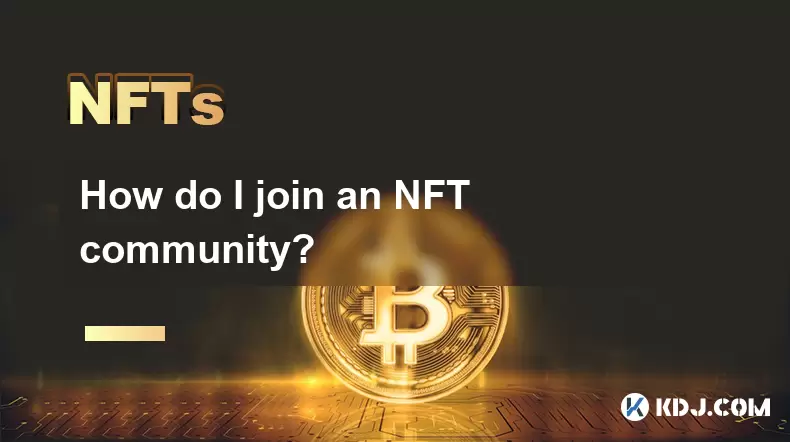
How do I join an NFT community?
Aug 07,2025 at 10:21pm
Understanding the Purpose of NFT CommunitiesNFT communities are digital ecosystems built around specific non-fungible token projects, artists, or broa...
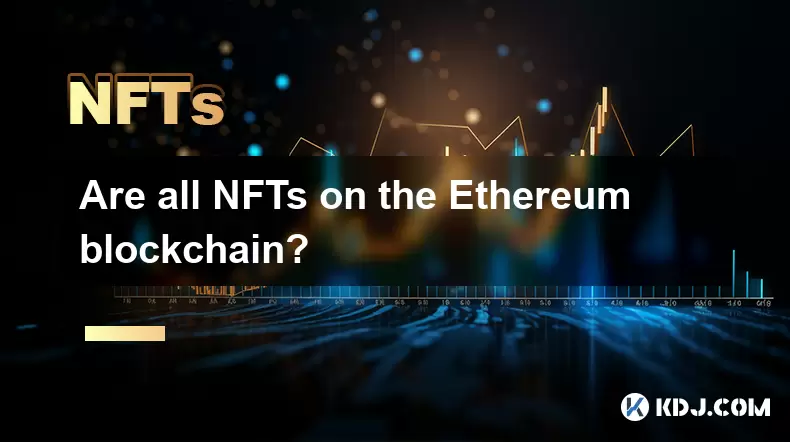
Are all NFTs on the Ethereum blockchain?
Aug 08,2025 at 08:49pm
Understanding the Ethereum Dominance in the NFT SpaceThe Ethereum blockchain has played a foundational role in the development and popularization of n...

What is shilling in the NFT space?
Aug 08,2025 at 02:14am
Understanding the Concept of Shilling in the NFT EcosystemIn the NFT space, the term shilling refers to the act of aggressively promoting a specific d...

What are NFT traits?
Aug 07,2025 at 10:35pm
Understanding the Concept of NFT TraitsNFT traits define the unique characteristics of a non-fungible token, particularly within collections such as p...

How do I analyze the rarity of an NFT?
Aug 09,2025 at 01:00am
Understanding NFT Rarity and Its ImportanceNFTs, or non-fungible tokens, represent unique digital assets verified on a blockchain. Unlike fungible tok...

How do I get on an NFT whitelist?
Aug 08,2025 at 09:15am
Understanding the Concept of an NFT WhitelistAn NFT whitelist is a curated list of wallet addresses granted special privileges during an NFT project’s...

How do I join an NFT community?
Aug 07,2025 at 10:21pm
Understanding the Purpose of NFT CommunitiesNFT communities are digital ecosystems built around specific non-fungible token projects, artists, or broa...

Are all NFTs on the Ethereum blockchain?
Aug 08,2025 at 08:49pm
Understanding the Ethereum Dominance in the NFT SpaceThe Ethereum blockchain has played a foundational role in the development and popularization of n...
See all articles

























































































